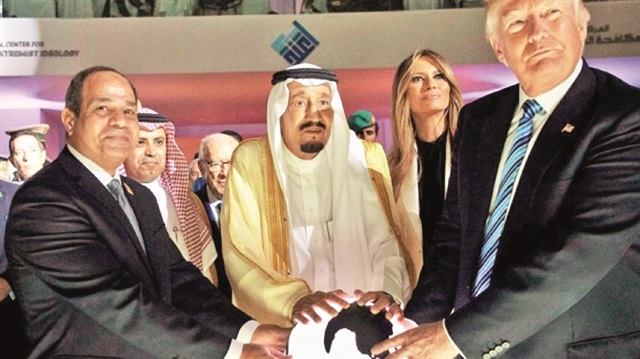
Trump’s visit to Riyadh has led to many significant developments in the Middle East
Since U.S. President Donald Trump’s visit to Saudi Arabia on May 20, 2017, tensions have run high in the Middle East and critical developments have taken place.
During his visit to the country, U.S. President Donald Trump signed a $110 billion arms deal with Saudi Arabia. Joining Saudi King Salman’s traditional sword dance, Trump also touched a glowing orb with Egypt’s putschist General Abdel Fattah al-Sisi and King Salman.
Following the cyber-attack row between Qatar and the Arab states on May 23, Saudi Arabia, Egypt, Bahrain and the United Arab Emirates (UAE) and Yemen announced that they had cut diplomatic ties with Qatar on June 5, accusing Qatar of “supporting terrorism,” charges which Doha denies.
King Salman ended a tradition in his country and named his 31-year-old son Mohammed bin Salman next in line instead of the Crown Prince Mohammed bin Nayef. This change was interpreted as a “soft coup.”
Iraq's influential Shia leader Muqtada al-Sadr visited Saudi Arabia upon an official invitation for the first time in 11 years.
Iraq’s Kurdistan Regional Government (KRG) held an illegitimate “independence referendum” although many countries opposed the vote, including Turkey.
The Hamas and Fatah movements signed a “reconciliation deal” within the ongoing negotiations in Egypt, ending a conflict in Palestine.
Recently putting more pressure on Iran, U.S. President Trump withdrew his support from the nuclear deal signed in 2015, and put the fate of the deal in the Congress’ hands.
Saudi Crown Prince Mohammed bin Salman stated that his country will return to “moderate Islam” and that they will end “extremism” soon.
Iran’s links to al-Qaeda have been revealed after U.S. Central Intelligence Agency (CIA) released around 470,000 documents seized in a raid of al-Qaeda leader Osama Bin Laden’s house.
Hello, the comments you share on our site are a valuable resource for other users. Please respect other users and different opinions. Do not use rude, offensive, derogatory, or discriminatory language.
The floor is all yours.












